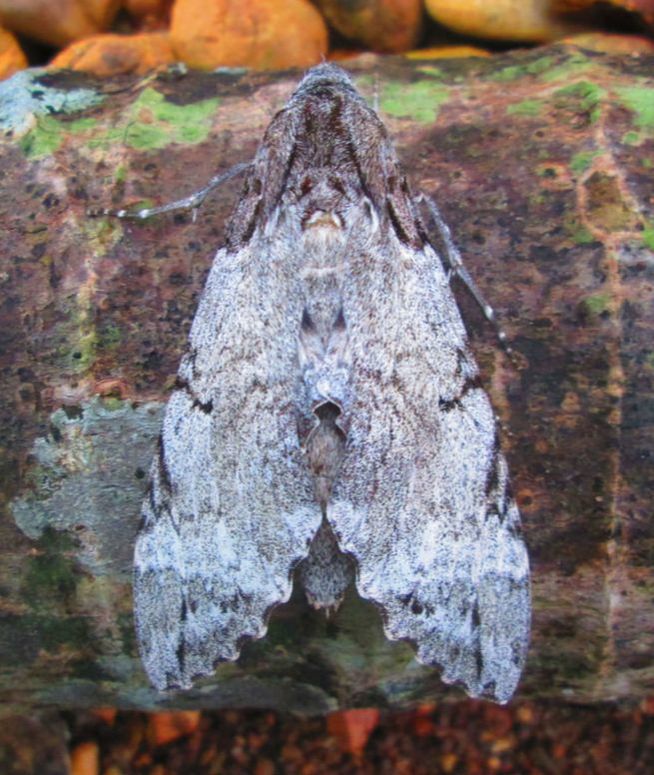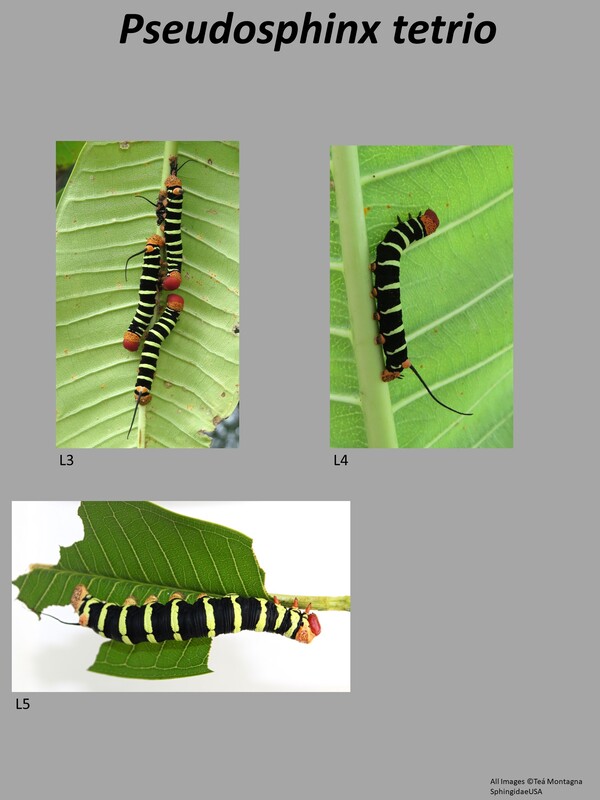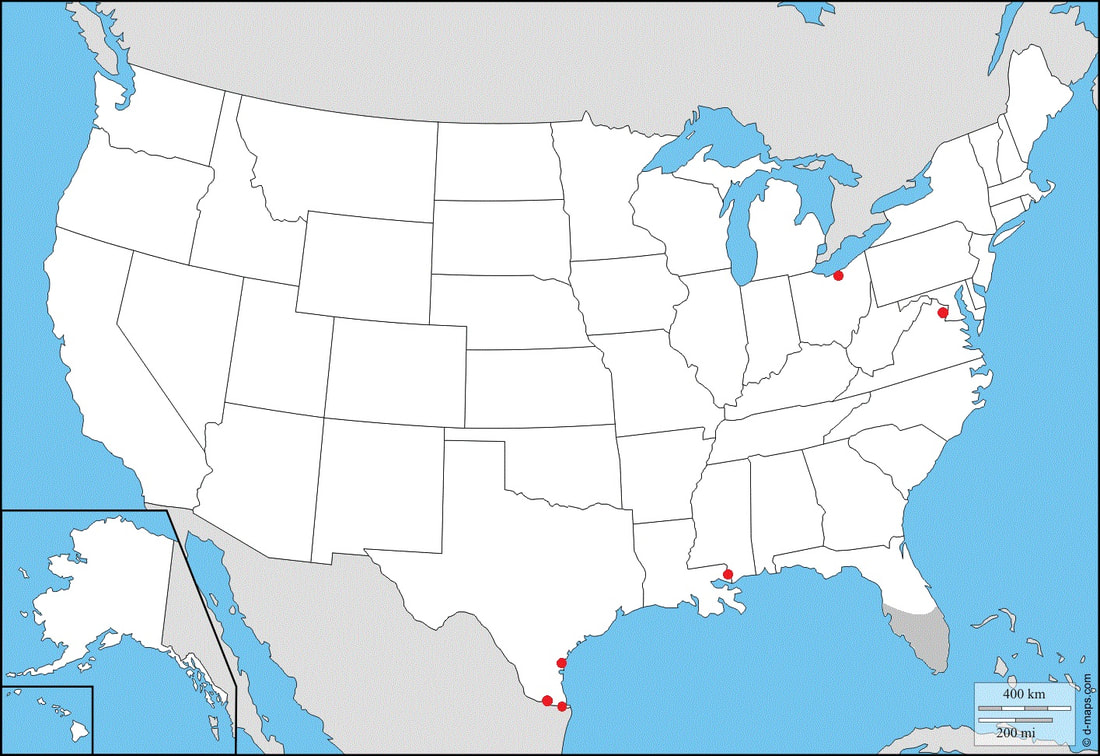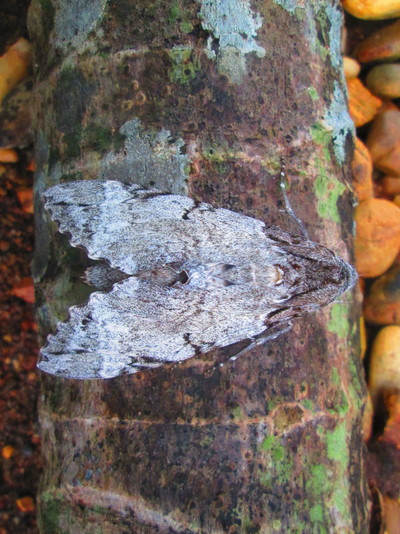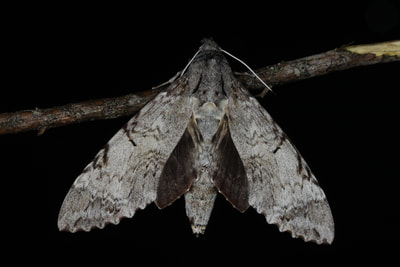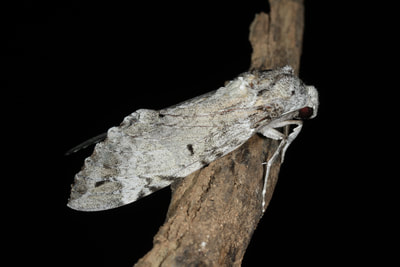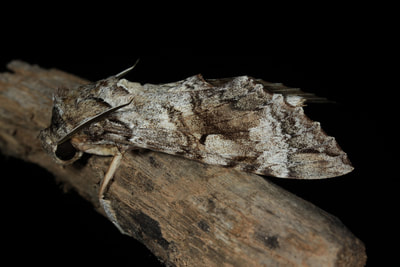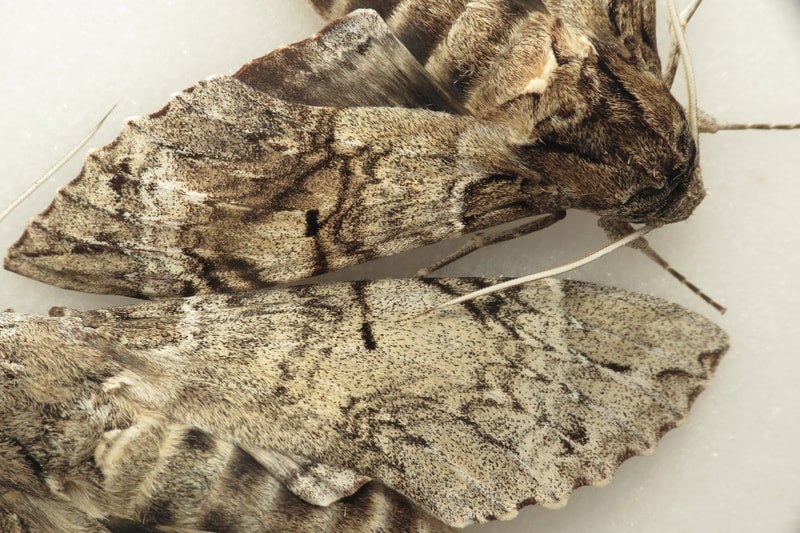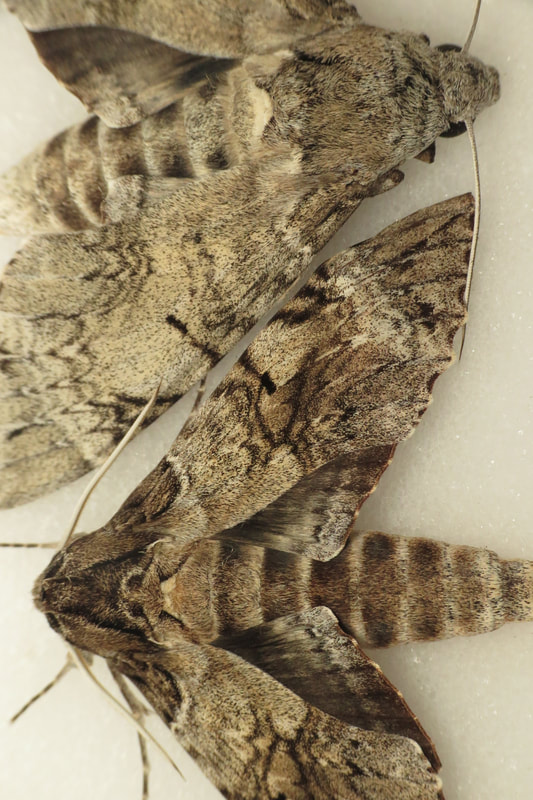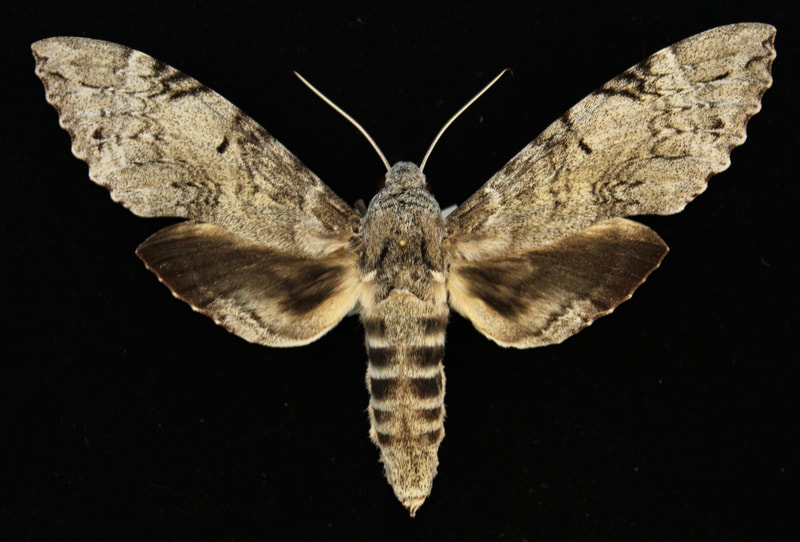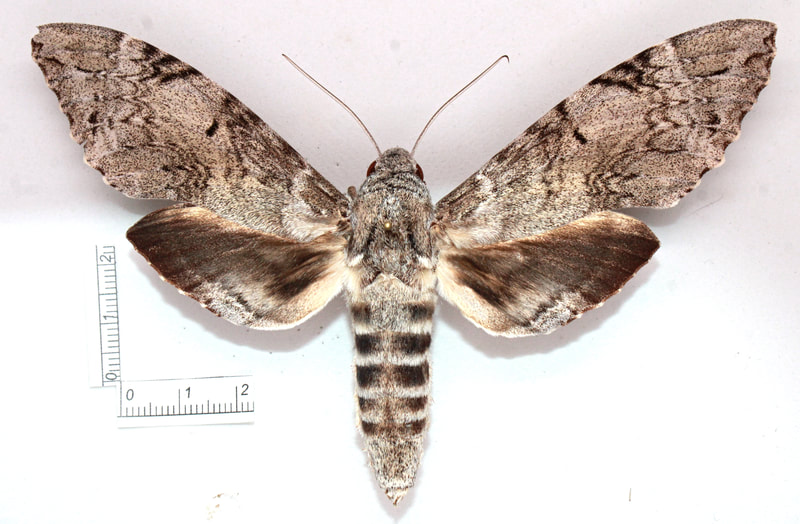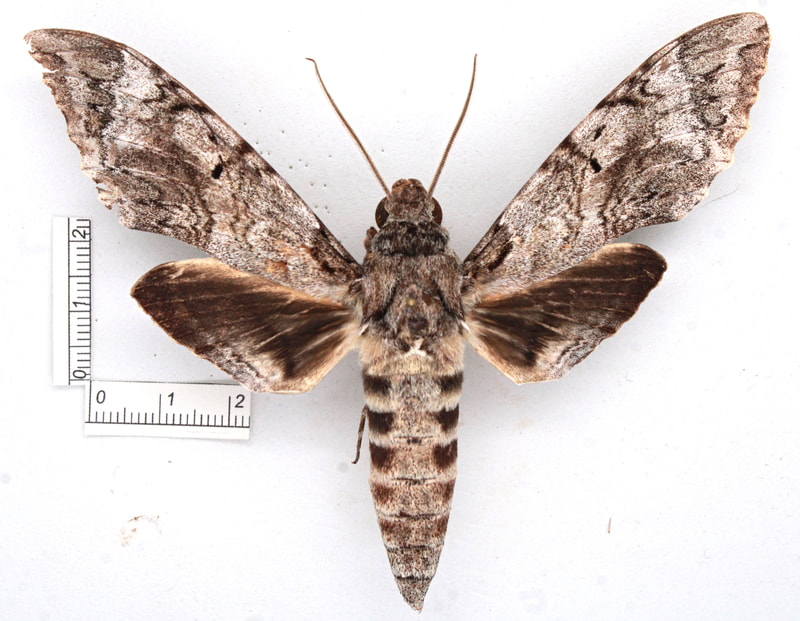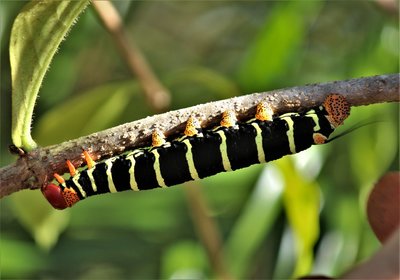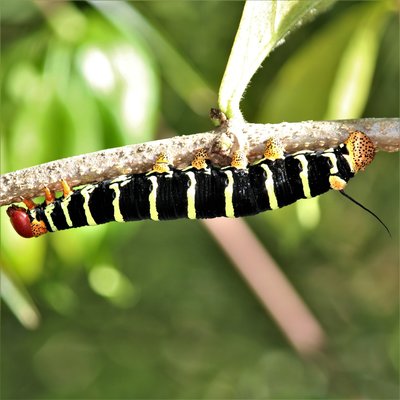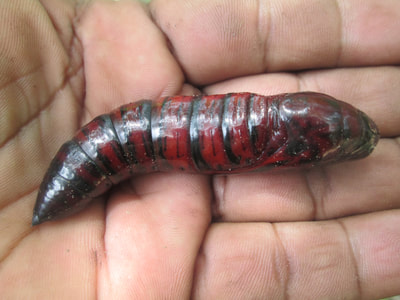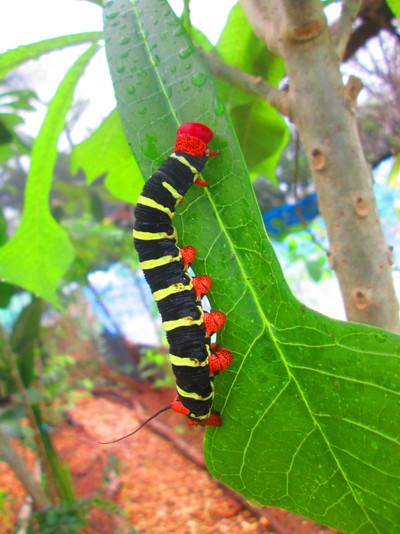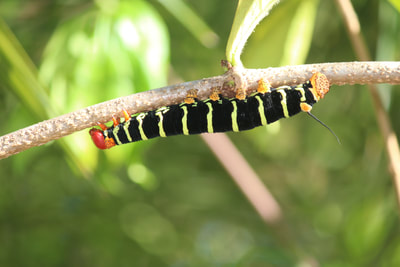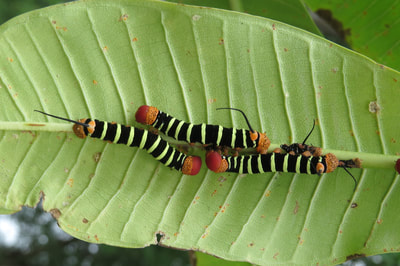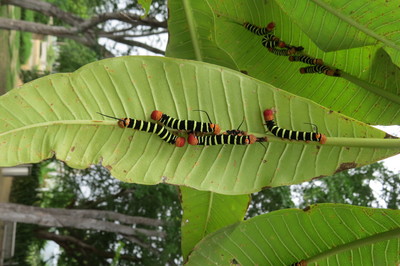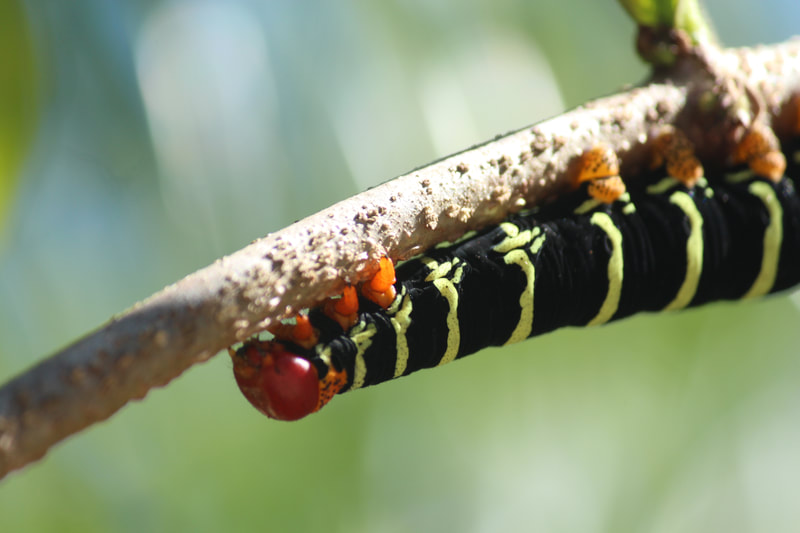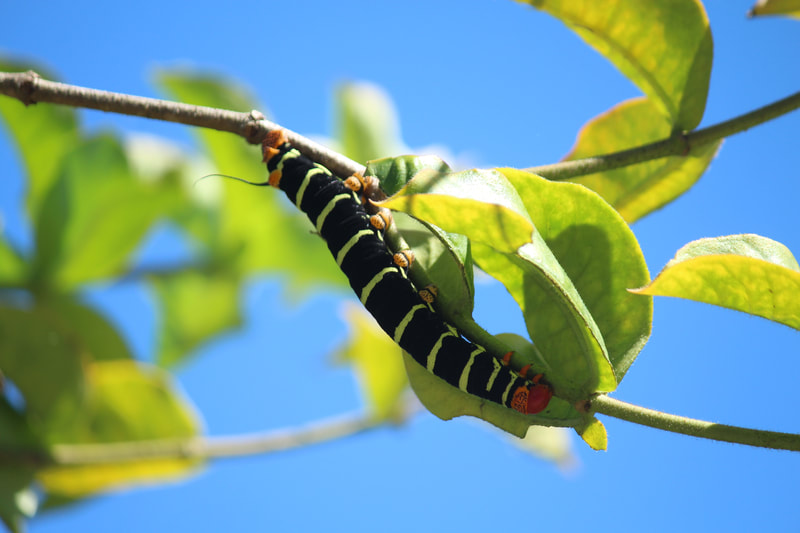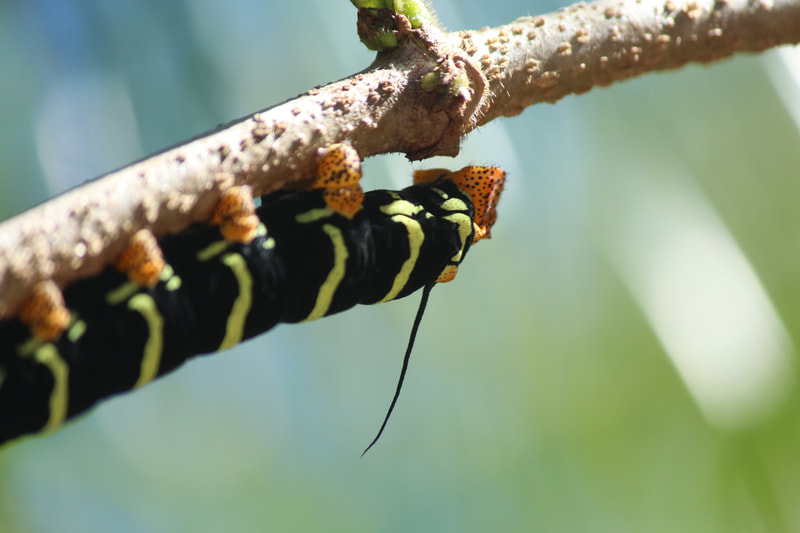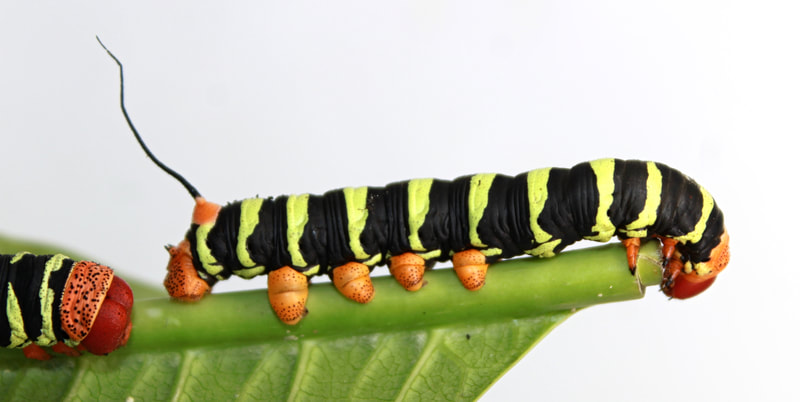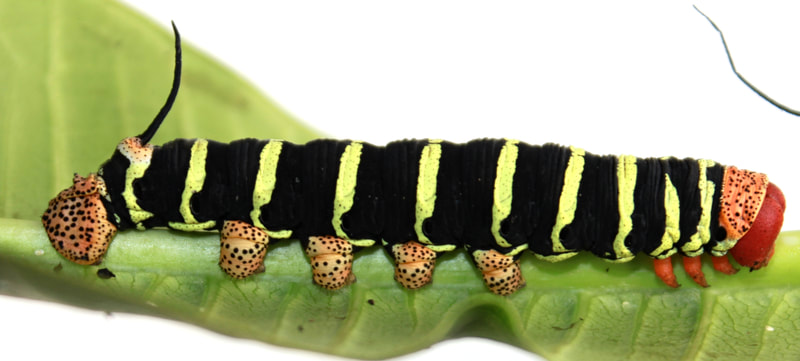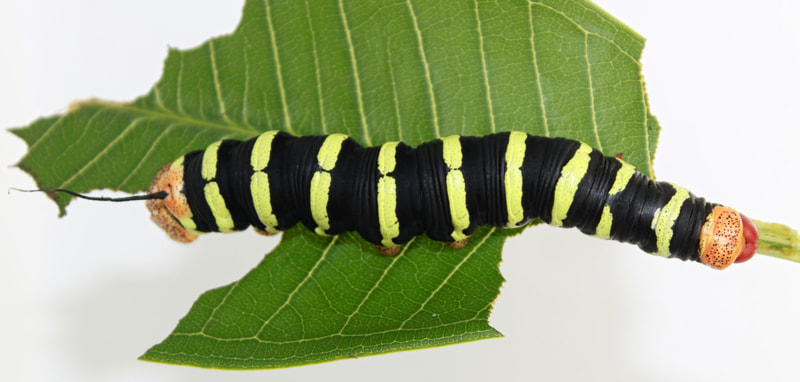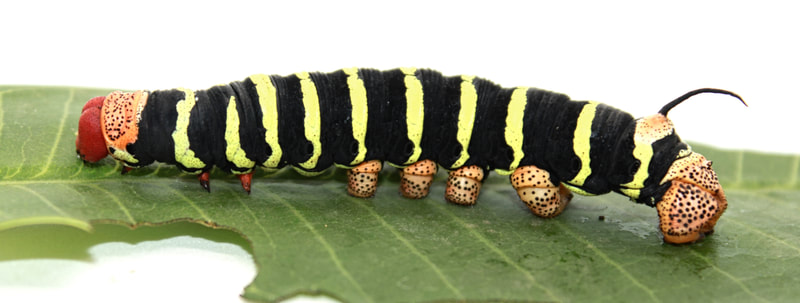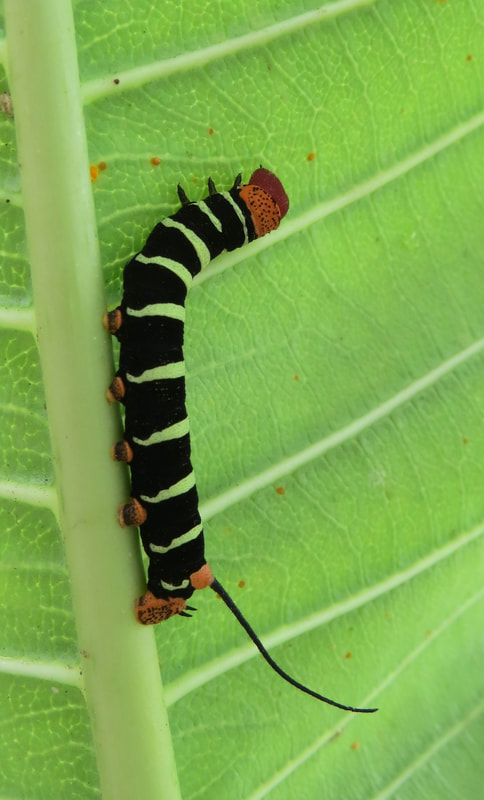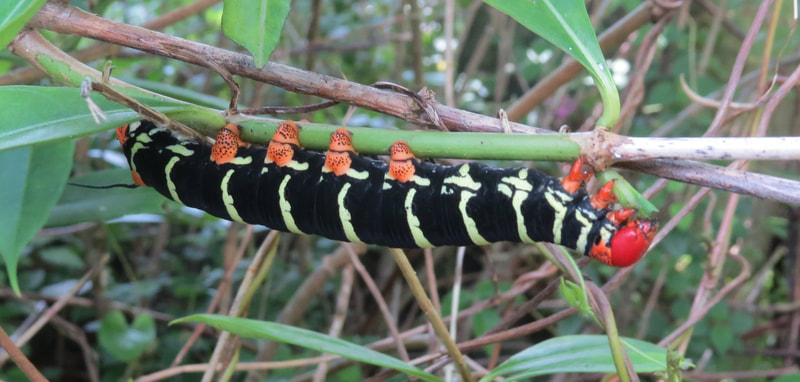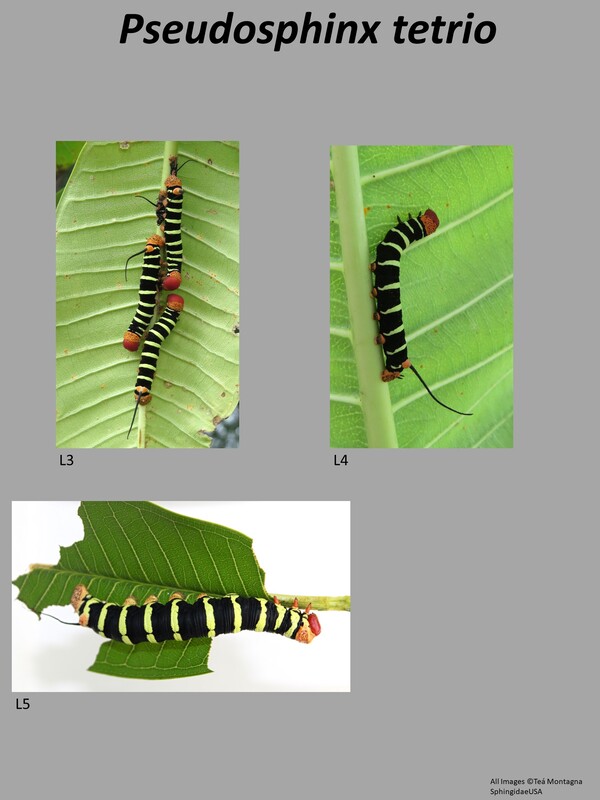|
Common Name(s): Tetrio Sphinx; Frangipani Hornworm
Ecology: This moth is found throughout The Caribbean and Central and South America, with US populations being in Southern Florida. This moth is a strong flier, and frequently strays outside it’s breeding range with records from Virginia, Pennsylvania, Louisiana, and Ohio. In Florida, this moth is associated with Plumeria or Frangipani. The large conspicuous larvae can defoliate Plumeria quite easily, and because of this, can be considered a pest. In Puerto Rico, this is one of the most reported species, because of the abundance of hostplant and conspicuousness of the larvae. Rearing Notes and Larval Searching: The larvae are easily to find on ornamental Plumeria spp. You will almost never find just one larva, as females tend to lay many eggs per plant. Rearing the larvae can be accomplished easily on any of their hostplants. Larvae are very easy to rear, and do not seem as difficult to rear as other Sphingidae. Final instar larvae survive extremely well on cut food in plastic containers, and eat a considerable amount before pupation (1). Pupation is just as easy in either slightly damp soil, or damp paper towels (1). The larvae do flourcese under the UV light, and while this is another easy way to see them, daytime searches are just as productive (1). Adult description: This is a very large gray moth with forewings 58-78mm in length (2). This species is sexually dimorphic, the males are a darker gray with more black markings and the females are much lighter gray with less black markings. The males thorax is a much darker gray-brown as well. The markings are highly variable. The hindwings are black with some gray coloration on the anal angle. The combination of the large size and overall gray appearance with black hindwings makes this species unmistakeable. Larval description: L1: From it’s first instar, the larva has the typical black and yellow striping and the characteristic long spindly black horn. It is quite small, and often found feeding in large groups. This species is quite easy to recognize in all it’s larval instars. L3: The only difference in the larva at this point, is it’s size. The color and pattern remain unchanged. L5: The larva is incredibly large and conspicuous. It’s black and yellow striping with a long, spindly black horn make it unmistakeable. The head capsule and collar are bright red. There is lots of black speckling on the collar, prolegs, anal plate, and base of the horn Hostplants: Click here to load this Caspio Cloud Database
Cloud Database by Caspio |
The gallery to the left contains photos of Pseudosphinx tetrio adults. If you have a photo that you would like to submit to us, please contact us.
The gallery to the right contains photos of Pseudosphinx tetrio larval and pupal stages. If you have a photo that you would like to submit to us, please contact us.
The gallery to the right contains photos of Pseudosphinx tetrio larval and pupal stages. If you have a photo that you would like to submit to us, please contact us.
|
|
